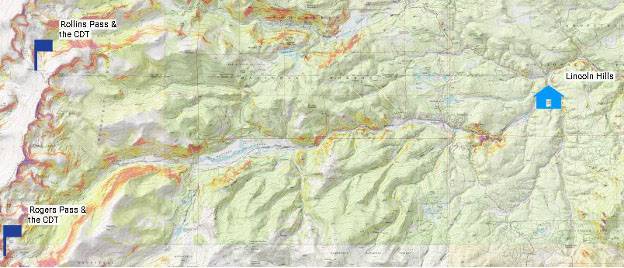The Continental Divide Trail (CDT) unites us. From Gateway Community residents to thru-travelers, and everyone in between, our diverse community is connected by our mission to protect the CDT. We are showcasing stories of the people and places that make up our community with our series, Voices of the CDT. Each month, look out for new stories that highlight these diverse experiences, histories, and faces, against the backdrop of the awe-inspiring Continental Divide.
INTERESTED IN SHARING YOUR CONNECTION TO THESE LANDSCAPES? SEND US YOUR STORY AT [email protected] FOR A CHANCE TO BE FEATURED!
Lincoln Hills
ESTABLISHED IN 1922, LINCOLN HILLS WAS THE FIRST AND ONLY VACATION RESORT WEST OF THE MISSISSIPPI RIVER CATERING TO AFRICAN-AMERICANS
At the start of the 20th century, segregated parks and outdoor spaces prevented African-Americans from enjoying recreation around the country, including along the Continental Divide. In 1922, two Denver entrepreneurs, Roger Ewalt and E.C. Regnier, set out to help remedy this. They formed the Lincoln Hills Development Company (LHDC) to create a resort where middle-class African-Americans could vacation and enjoy the natural splendor of the Rockies. Nestled along South Boulder Creek, just over 12 miles from the Continental Divide, Lincoln Hills was the only resort for African-Americans west of the Mississippi River at the time.

The 100-acre resort area was split into over 600 lots for campsites and cabins in the 1920s and 30s, each lot selling for $50–100. Then from 1925-1928, Obrey Wendell “Winks” Hamlet and his wife Naomi Hamlet built the first full-service resort hotel, which became known as Winks Lodge. Over the years, Winks Lodge hosted many well-known African-American creatives including Duke Ellington, Langston Hughes, Zora Neale Thurston and many others.
In 1927, Lincoln Hills added a girl’s camp, “Camp Nizhoni,” established by the Phillis Wheatley branch of the YMCA. At the time, YMCA camps were still segregated and African-American girls could not attend the nearby YMCA camp at Lookout Mountain, CO. Camp Nizhoni offered African-American girls a place to swim, hike, and play in Arapaho National Forest until 1945, when YMCA camps were integrated and girls from Camp Nizhoni could attend the camp at Lookout Mountain. Denver Public Library has a collection of photographs from Camp Nizhoni here.

In 1928, a railroad offering daily transportation to Lincoln Hills opened, running through Moffat Tunnel under the Divide. The railroad was used to transport mining materials, passengers, and other supplies from one side of the Divide to the other. Other industrial development in the area included mining for gold from 1938–1947 in the land around Lincoln Hills, and the establishment of an icehouse from 1942–1947 that supplied ice to The Ice House in Denver, a tavern that still operates today.

Lincoln Hills continued offering a safe and welcoming space for African-Americans to enjoy the outdoors and build a community in the beauty of the mountains. The resort was open until the mid-1960s when Obrey “Winks” Hamlet died and then the Civil Rights Act of 1964 passed, slowly opening up more outdoor spaces and resorts for access for African-Americans.

Lincoln Hills Cares, a non-profit focused on developing the next generation of leaders through outdoor education, cultural history exploration, and workforce advancement, continues the legacy of Lincoln Hills through their Youth Outdoor Education Programs, TeamWorks, and the Pathways Program. They work to connect communities that were originally associated with Lincoln Hills, as well as maintain the culture and passion that enlivened the thriving community of Lincoln Hills at its creation.
To read more about Lincoln Hills history and the present day work of Lincoln Hills Cares, check out these additional resources: Lincoln Hills History, Lincoln Hills Historical Photo Collection, Lincoln Hills Cares Programs, and Lincoln Hills Cares Facebook Page.

